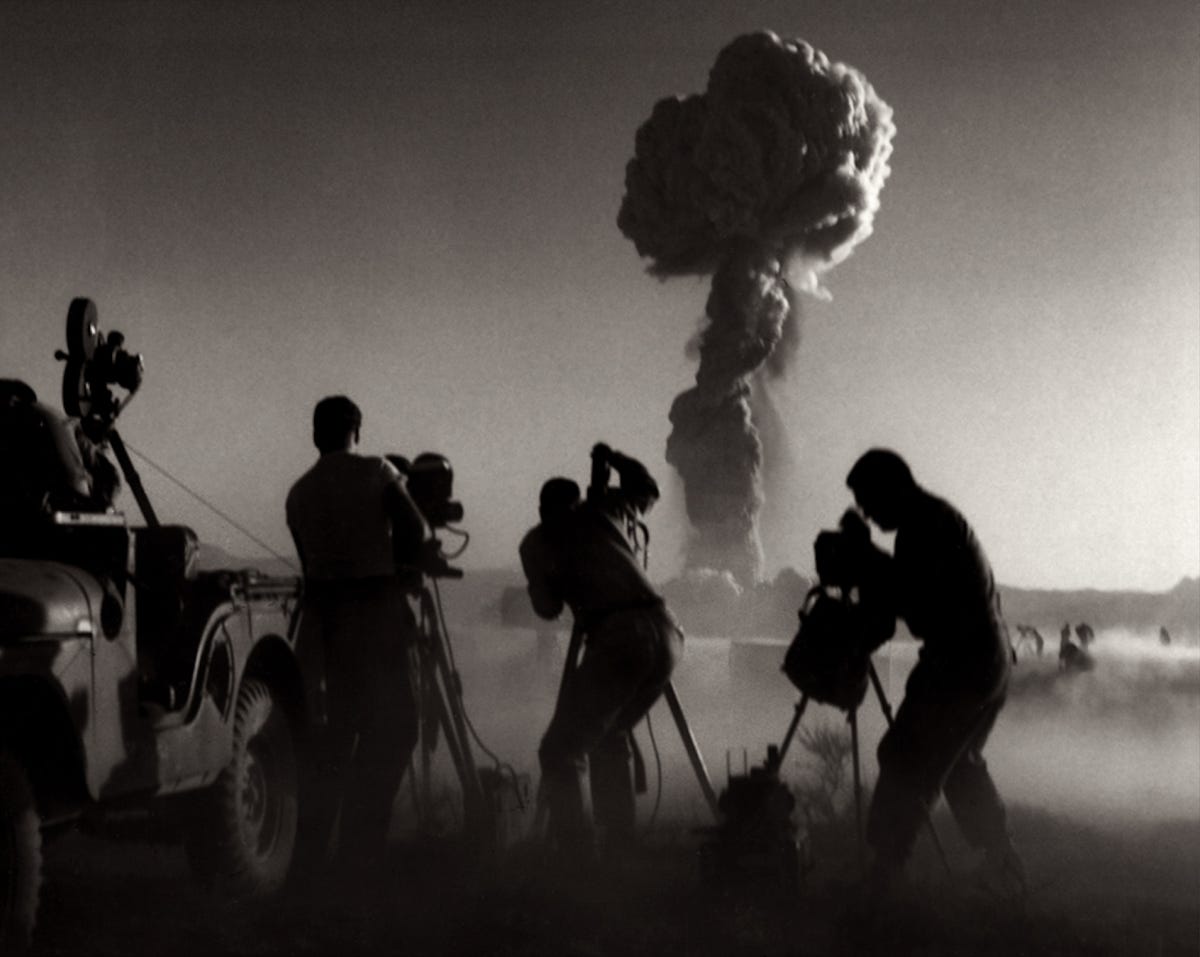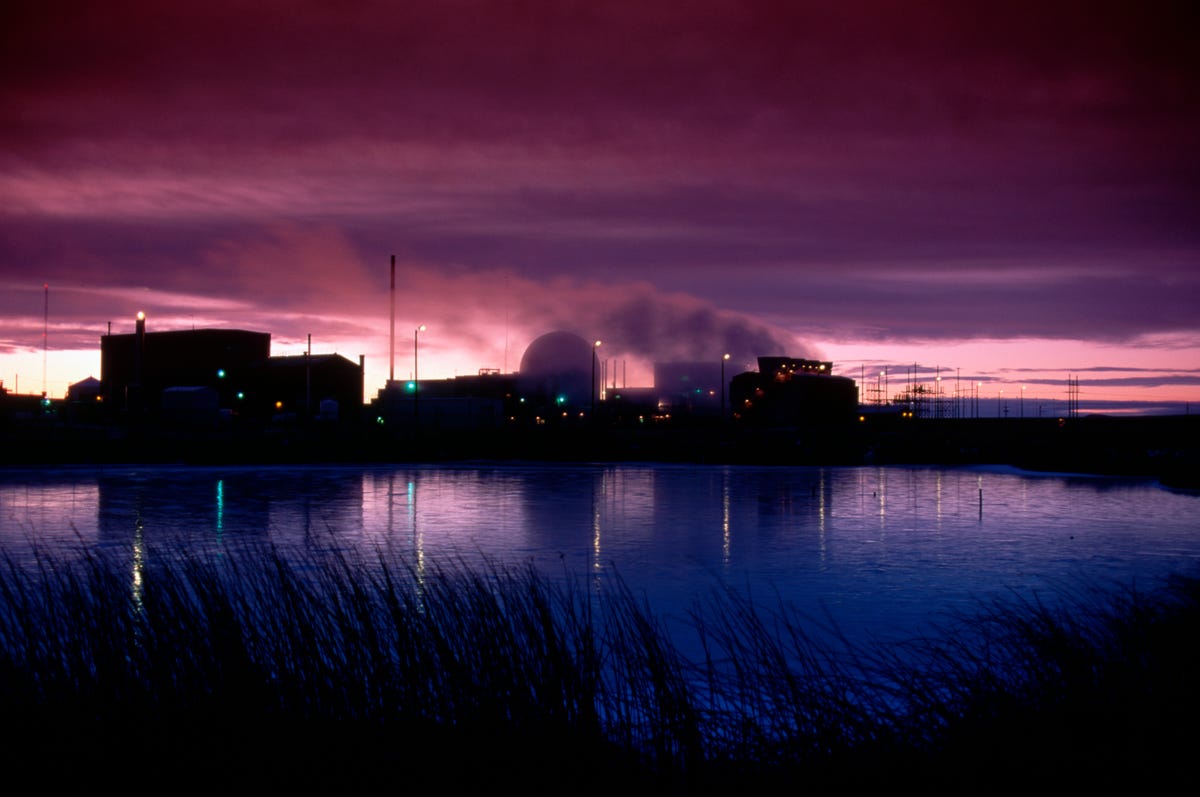How much nuclear waste is in your state?
The Nuclear Energy Institute keeps tabs on the spent nuclear fuel stored in states across the US. Here's where the radioactive waste ends up.

Does your state have nuclear waste?
Here's a ranking of how radioactive waste storage shakes out, from waste-free states to states with a lot of radioactive residue.
Among the waste-free: Nevada. Yes, the Nevada Test Site was established in 1951 to test nuclear weapons. But the state currently has no spent nuclear fuel.
Other states with zero waste: North Dakota, South Dakota, Wyoming, Utah, Oklahoma, Indiana, Kentucky, West Virginia, Delaware, Rhode Island, Alaska, Hawaii and Montana.
Data was gathered from the Nuclear Energy Institute.
New Mexico: 4.9 metric tons
New Mexico doesn't have any spent fuel rods, but it is home to the Waste Isolation Pilot Plant (WIPP) which hosts 4.9 metric tons of plutonium deep in a salt mine.
Colorado: 30 metric tons
Residents who lived downwind of the former Rocky Flats Nuclear Weapons Plant are no strangers to the effects of improperly handled nuclear waste. The health survey shown here, conducted by MSU Denver, tracks unusual illnesses in areas exposed to the after-effects of manufacturing at the Rocky Flats plant.

Idaho: 130 metric tons
At the Argonne Nuclear Labs Western Plant, scientists research methods for storing nuclear waste.
Oregon: 350 metric tons
The cooling tower at the Trojan Nuclear Power Plant was destroyed in a controlled demolition when the plant was decommissioned in 2006. But 34 steel and concrete storage casks filled with radioactive materials remain.
Iowa: 530 metric tons
The Duane Arnold Energy Center is Iowa's only nuclear plant. In its last safety inspection by the Nuclear Regulatory Commission, the plant performed as well as any facility can.
Maine: 540 metric tons
This photo shows what remains of the old Maine Yankee Nuclear Power Plant in Wiscasset, Maine. Those cylinders are dry storage casks. Research is still being done surrounding the long-term integrity of this storage method.
New Hampshire: 660 metric tons
This photo shows a 1979 protest over the Seabrook Station. In 2013, the NRC and researchers from Stanford University both expressed concern that Seabrook is vulnerable to earthquakes and flooding from rising sea levels.
Vermont: 710 metric tons
Entergy Vermont Yankee nuclear power plant was decommissioned on December 29, 2014, but these casks remain.
Massachusetts: 720 metric tons
The NRC recently designated the reactor at Pilgrim Nuclear Power Station in Plymouth, Massachusetts, as one of the nation's three least-safe reactors. There are also more than 3,000 spent fuel assemblies currently cooling in the storage pool.
Washington: 750 metric tons
This is the sign outside of the Hanford Nuclear Reservation in Washington, where a tunnel storing contaminated materials recently collapsed and forced the evacuation of the facility.
Kansas: 770 metric tons
The water in Coffey County Lake is heated inside the plant. The lake water acts as a coolant for the Wolf Creek Nuclear Power Plant in Kansas.
Missouri: 790 metric tons
No, this isn't an ancient Egyptian tomb: This is the resting place of 1.48 million cubic yards of toxic waste from what was the largest explosive factory in the United States.
Instead of moving the radioactive factory somewhere else, the government sealed the groundwater system and then buried the demolished buildings with 45 acres of stone, concrete and clay.
Nebraska: 1,010 metric tons
The Missouri River flooded in 2011 and surrounded most of the Fort Calhoun plant. Water was kept away from vital buildings long enough for the flooding to subside. Though the public was never in danger, a small fire prompted a partial evacuation.
Mississippi: 1,010 metric tons
Mississippi has its own stock of spent nuclear fuel rods stored near reactors like this one at the Grand Gulf Nuclear Generating Station which, at 4,408 thermal megawatts, is the most powerful reactor in the United States.
Mississippi is also on the transit route for low-level radioactive waste to the WIPP in New Mexico.
Ohio: 1,330 metric tons
Davis-Besse Nuclear Power Station near Toledo, Ohio has experienced 11 safety incidents, including one in 2002, when a football-sized hole was discovered in the reactor head. That corrosion put the plant on the brink of nuclear meltdown.
No radiation escaped, but the NRC fined owner FirstEnergy Corp. more than $5 million, and the U.S. Department of Justice fined it $28 million.
Minnesota: 1,390 metric tons
Dry cask storage of spent nuclear fuel rods sees sustained opposition from some residents of neighboring Prairie Island Indian Community Reservation.
Louisiana: 1,470 metric tons
This is the Waterford 3 plant. In 2011, the NRC deemed it a high risk for flooding.
The Department of Energy and the NRC have considered Louisiana's Vacherie salt dome as a potential long-term storage facility for high-level waste. But the state has banned any study or speculation of a salt-dome solution.
Wisconsin: 1,490 metric tons
Minnesota's National Guard trains for disasters like nuclear contamination caused by tornadoes. The La Crosse Boiling Water Reactor is protected by thick concrete walls, but keeping enough power to cool the reactor could prove a challenge after a big storm.
Arkansas: 1,530 metric tons
The NRC has rated the Arkansas Nuclear One plant as the worst in the country for safety standards. In 2013, one worker was killed and eight more were injured in a botched evacuation.
Maryland: 1,550 metric tons
Environmental groups such as the Sierra Club oppose the expansion of Calvert Cliffs Nuclear Power Plant, citing concerns over waste storage as well as increased risks of accidents or terrorist attacks.
Tennessee: 1,970 metric tons
Oak Ridge, Tennessee was once a central part of America's Manhattan Project effort to build a nuclear bomb. Now Oak Ridge stores spent nuclear fuel from around the world. Germany and France have both contracted the city to store low-level waste.
Connecticut: 2,250 metric tons
This aerial photo of the now-decommissioned Connecticut Yankee plant shows dry casks filled with low- and high-level waste from sections of the disassembled reactor.
Arizona: 2,390 metric tons
In 2003, the National Guard was dispatched to the Palo Verde facility in Arizona in response to a specific terrorist threat against the power plant.
Texas: 2,610 metric tons
This photo shows inspectors from the NRC touring the Comanche Peak Nuclear Power Plant in Somervell County, Texas.
Virginia: 2,850 metric tons
A 2011 earthquake in Virginia caused the 117-ton spent fuel casks at North Anna nuclear plant to move a few inches, but the plant weathered the event with no serious damage.
New Jersey: 3,020 metric tons
This sign tells residents of Lower Alloways Township, New Jersey what to do if they hear the sirens from the Salem Nuclear Power Plant or Hope Creek Nuclear Generating Station. Tens of thousands of people live within the plume exposure pathways of these two plants.
Georgia: 3,030 metric tons
This plant in Wayensboro, Georgia was supposed to signal a new wave of nuclear power in the United States. However, construction delays and hiccups with shipping have bankrupted Westinghouse.
Michigan: 3,050 metric tons
These power plants on the banks of Lake Erie are named after Enrico Fermi, the Italian physicist and inventor of the nuclear reactor.
Florida: 3,330 metric tons
Florida Power & Light wants to store spent fuel rods under Biscayne Bay near the Turkey Point Nuclear Power Plant. The bay is home to fragile populations of endangered species, including this crocodile, and also provides drinking water to the people of southern Florida.
California: 3,390 metric tons
The red arrow points to the location of dry storage casks at the decommissioned San Onofre power plant. The casks, filled with 3.6 million pounds of radioactive waste, are perched about 100 feet from the ocean in an area prone to earthquakes.
North Carolina: 3,760 metric tons
According to 2010 US Census data, the population in the plume exposure radius of this power plant has more than doubled since 2000.
Alabama: 3,840 metric tons
These benign-looking blue and white signs point the way to safety in the event of an emergency at Browns Ferry Nuclear Power Plant near Athens, Alabama.
New York: 4,180 metric tons
Renewable energy advocates protest Gov. Andrew Cuomo's nuclear bailout plan on May 17, 2017. The taxpayer cost is a matter of contention, as is the danger of having an ever-growing store of nuclear waste onsite at New York's four nuclear power generating stations.
South Carolina: 4,680 metric tons
The Department of Energy currently owns the Savannah River Site, a nuclear reservation where radioactive materials were once refined for use in bombs. 84-year-old Byron Vaigneur of Jackson, South Carolina, worked at there for 33 years. He received $350,000 from the federal government for chronic diseases he contracted from working at the site.
Pennsylvania: 7,330 metric tons
Abrianna Nissley, 6 is seen swinging at sunset with a view of the Three Mile Island nuclear power plant from her family farm. In 1979, Three Mile Island was the site of the worst commercial nuclear accident in U.S. history.
Illinois: 10,180 metric tons
About 1,000 tons of highly radioactive waste is reportedly stored in a containment pool on the Zion Nuclear Power Station property, and there's no plan for how to deal with it permanently.
General Electric owns the country's only high-level nuclear waste storage site, called the Morris Operation, in Grundy County, Illinois.